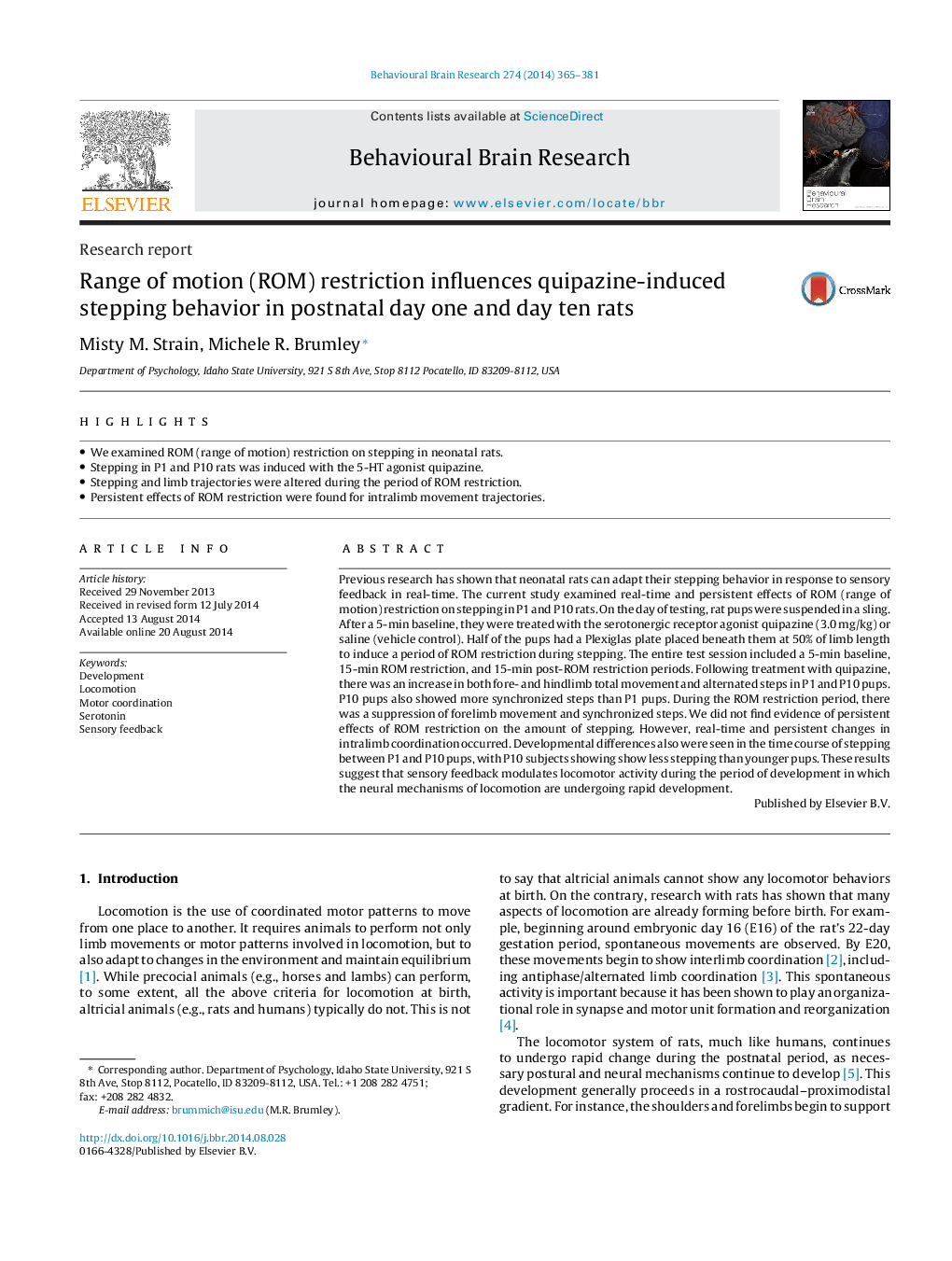| Article ID | Journal | Published Year | Pages | File Type |
|---|---|---|---|---|
| 6257781 | Behavioural Brain Research | 2014 | 17 Pages |
â¢We examined ROM (range of motion) restriction on stepping in neonatal rats.â¢Stepping in P1 and P10 rats was induced with the 5-HT agonist quipazine.â¢Stepping and limb trajectories were altered during the period of ROM restriction.â¢Persistent effects of ROM restriction were found for intralimb movement trajectories.
Previous research has shown that neonatal rats can adapt their stepping behavior in response to sensory feedback in real-time. The current study examined real-time and persistent effects of ROM (range of motion) restriction on stepping in P1 and P10 rats. On the day of testing, rat pups were suspended in a sling. After a 5-min baseline, they were treated with the serotonergic receptor agonist quipazine (3.0Â mg/kg) or saline (vehicle control). Half of the pups had a Plexiglas plate placed beneath them at 50% of limb length to induce a period of ROM restriction during stepping. The entire test session included a 5-min baseline, 15-min ROM restriction, and 15-min post-ROM restriction periods. Following treatment with quipazine, there was an increase in both fore- and hindlimb total movement and alternated steps in P1 and P10 pups. P10 pups also showed more synchronized steps than P1 pups. During the ROM restriction period, there was a suppression of forelimb movement and synchronized steps. We did not find evidence of persistent effects of ROM restriction on the amount of stepping. However, real-time and persistent changes in intralimb coordination occurred. Developmental differences also were seen in the time course of stepping between P1 and P10 pups, with P10 subjects showing show less stepping than younger pups. These results suggest that sensory feedback modulates locomotor activity during the period of development in which the neural mechanisms of locomotion are undergoing rapid development.
